Tempranillo is one of the most popular Spanish grape varieties for producing full-bodied red wines with rich fruity flavors, vanilla, and oak aromas. The wines are characterized by medium to high tannin content, moderate acidity, and sweetness. The grape's taste depends on the climatic and soil conditions of the growing region. This variety thrives in mountainous areas with abundant sunlight.
Table of contents
Description and Characteristics of the Tempranillo Grape Variety
Tempranillo translates from Spanish as "early." The correct spelling, considering Spanish phonetics, is Tempranillo. Winemakers observed that this grape ripens earlier than Garnacha — a traditional Spanish blending grape.
The variety is cultivated in Spain (Navarra and Rioja), Portugal, France, Italy, and Australia. The dry, hot climate of these countries is ideal for its growth.
Origin and History
Tempranillo has been grown in modern-day Spain since ancient times. Archaeologists have discovered fossilized vine remains dating back 3,000 years. In 1972, a mosaic depicting Bacchus (Dionysus) — the god of wine — was found in the province of Burgos in northern Spain. The artifact dates back to 800 BC.
Researchers believe the grapevine was brought to the southern Iberian Peninsula by the Phoenicians from modern-day Lebanon. This ancient vine is considered the ancestor of Tempranillo.
In the 1990s, the variety gained worldwide popularity due to its adaptability to different soil types and climates. It became a classic technical grape, used for making Port and red table wines.
Description of Tempranillo Grapes
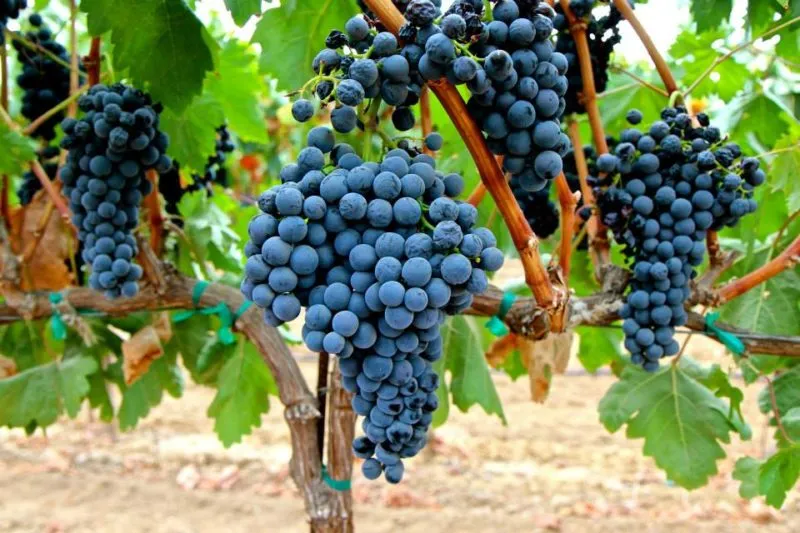
Tempranillo is a fast-growing vine with sparse foliage. Its compact size allows for dense planting, which improves yield. The vine can support up to 20 shoots, each with 25 buds.
The shoots are long, reaching up to 7 m, and fully mature.
Note! Under favorable conditions, the ripening rate reaches 85%.
The flowers are hermaphroditic, requiring no additional pollination. The leaves are large, wrinkled, and moderately hairy. During prolonged rains, the flowers and young berries remain intact, ensuring stable productivity.
The clusters are compact, cylindrical-conical, weighing 600–700 g. Density varies depending on climate. Young vines tend to produce small berries ("hens and chicks"), especially in cooler regions.
The berries are medium-sized, 12–15 mm in diameter. The skin is moderately thick, blue-black with a heavy matte bloom. The flesh is dark and moderately dense. Average weight — 6–8 g. The taste scores highly in evaluations. A natural mutation, Tempranillo Blanco, produces green-yellow berries used for white table wines.
Yields are consistently high with proper care: 4-5 kg per vine. Berry quality depends on growing conditions — excessive rain leads to watery fruit, negatively affecting wine quality. Overly humid conditions diminish flavor, so such grapes are used for budget wines or blends.
Tempranillo is low in calories — 64 kcal per 100 g — which doesn’t affect wine quality. The grapes are rarely eaten fresh, except for select sun-grown clusters. Sugar content reaches 16%, enhancing fermentation speed and wine richness.
Acidity is moderate — 9 g/L. Berries from high-altitude regions have higher acidity.
Drought resistance is low — the vines require ample watering and soil mulching to retain moisture.
Pros and Cons
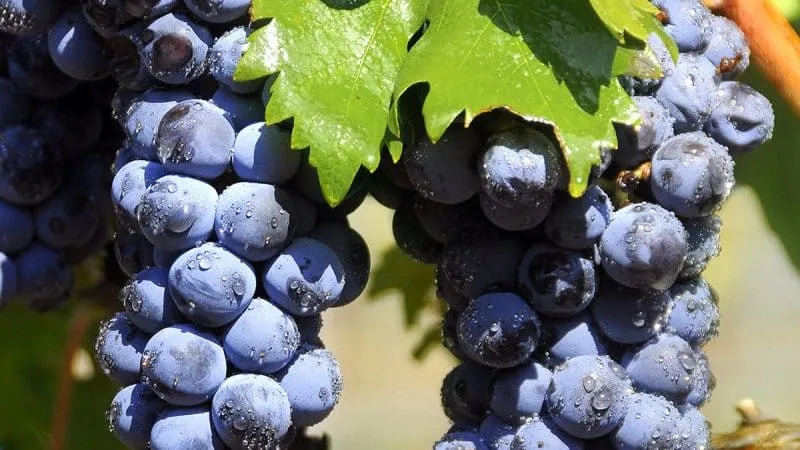
Advantages:
- High yield;
- Low acidity;
- Well-balanced wine flavor.
Disadvantages:
- Susceptibility to gray mold;
- Sensitivity to spring and autumn frosts;
- Taste heavily influenced by terroir;
- No natural pest resistance.
Similar Varieties
Tempranillo is an autochthonous (local) variety. Similar red wine grapes include Garnacha, Pinot Noir, Cabernet Franc, Malbec, and Cinsault.
Tempranillo Wine
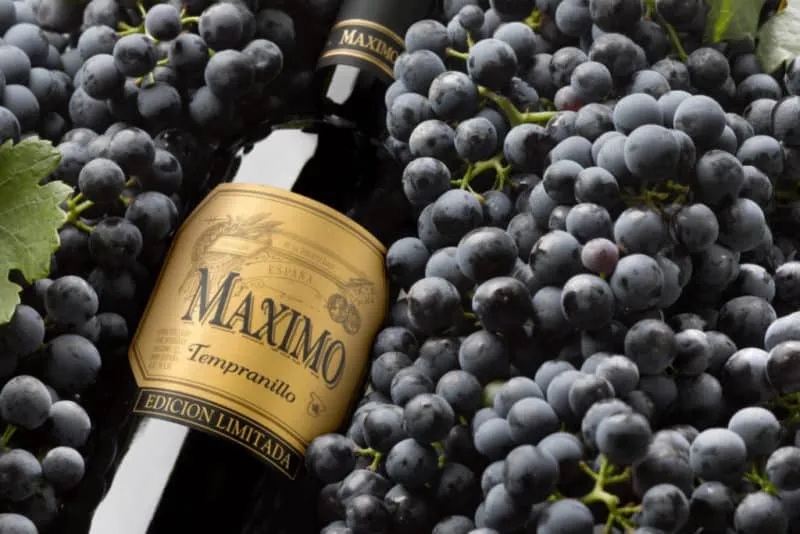
Tempranillo grapes contain anthocyanins, giving the wines a deep color and velvety tannins. The aromatic profile compensates for its relatively mild flavor, meeting consumer expectations.
Tempranillo wines exhibit notes of cherry, strawberry, blackcurrant, prune, chocolate, and tobacco. Berry flavors dominate in young wines from cooler regions, while the latter three notes characterize warmer-climate wines.
The wine is aged in American oak barrels — a traditional choice in Rioja, imparting coconut and vanilla tones. In Ribera del Duero, French or used oak barrels are preferred for a fruitier profile with subtle oakiness.
Note! Grapes ripened under hot southern sun yield exceptionally rich wines with perfect acid-sugar balance. The result is vibrant fruit flavors, smooth texture, and spicy aftertaste.
Australian and Argentine Tempranillo produces wines with cherry, tomato sauce notes, and low tannins.
In Spain, barrel-aged Tempranillo develops an orange hue. Despite its intensity, the structure remains light. It pairs well with chorizo, jamón, and grilled vegetables. In Italy, it accompanies pizza, lasagna, and tomato-based pasta.
In Mexico, Tempranillo is served with tacos, burritos, nachos, and chili. Other pairings: grilled red peppers stuffed with rice, black pudding, stewed beans, lamb with redcurrant jelly. Alcohol content averages 13–14.5%.
Popular wine styles:
- Vin Joven — young, unoaked, with limited shelf life, primarily consumed in Spain.
- Crianza — red wine aged two years (6 months in American oak).
- Reserva — red wine aged three years (1 year in oak). Elegant and full-bodied.
- Gran Reserva — red wine aged five years (18 months in oak). Rich, tannic.
Main producers: Portugal, Spain, Argentina, Australia.
Synonymous names:
- Spain: Tinto Fino, Ojo de Liebre, Cencibel, Tinto de Toro, Tinto Madrid, Tinto del País, Ull de Llebre;
- Portugal: Tinta Aragoneza, Aragonez, Arinto Tinto, Aragonês, Tinta Roriz, Tinta de Santiago.
Planting Vineyard
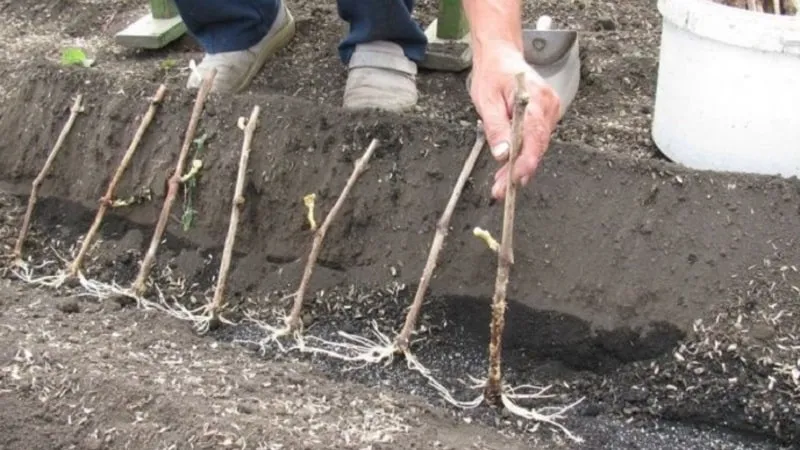
Tempranillo thrives in elevated terrain. This high-maintenance variety suits warm climates. To ensure plant health, growers apply fungicides, pest control, and install trellises for vine support.
Premium-quality grapes grow above 700 m altitude, where sunlight exposure is optimal, and day-night temperature swings balance acidity and sweetness.
Note! Ribera del Duero is considered the world’s best Tempranillo region. Daytime temperatures reach +40°C, dropping to +16°C at night. Viticulturists regard Tempranillo as the only variety adaptable to such extremes.
Ideal soil is fertile limestone. The growing cycle lasts 125–135 days, but Mediterranean climates accelerate ripening by two weeks. Commercial vineyards peak in yield 3-4 years after planting.
Planting occurs in early May, after frost risks pass. Spring sunlight promotes vigorous shoot and cluster development.
Planting Guide
Select sunny, wind-sheltered sites. Plow the soil beforehand; loosen heavy clay with sand. Pit dimensions: 70 cm wide, 80 cm deep. Add crushed stone or gravel at the base, then top with soil.
Use healthy saplings with green tips and developed white roots. Soak roots in growth stimulant for 30 minutes before planting. Space vines 1.5 m apart. Spread roots, backfill, compact soil, and water thoroughly. Install supports for future training.
Cultivation Techniques
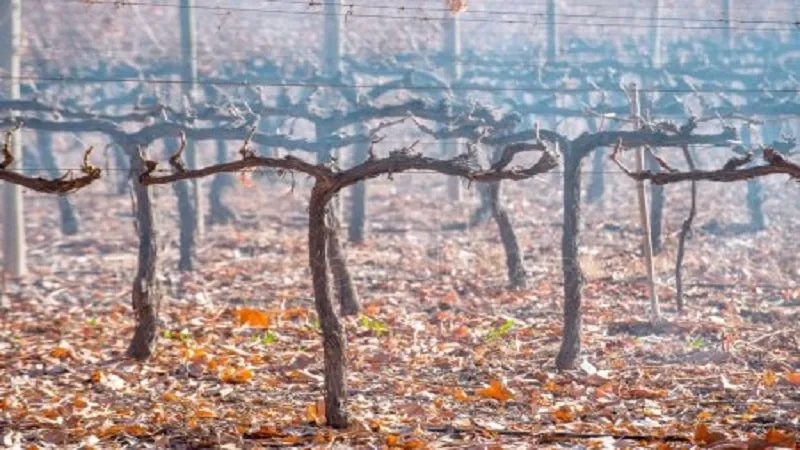
Tempranillo demands meticulous care.
Key cultivation practices:
- Trellising for vine support;
- Winter protection;
- Triannual preventive treatments;
- Pruning for productivity and canopy management;
- Subsurface irrigation;
- Row mulching;
- Organic and mineral fertilization.
Vines need moderate early-season watering and increased hydration during droughts. Bury a central irrigation pipe during planting to hydrate roots deeply. Loosen soil after watering for aeration. Mulch reduces tillage frequency and conserves moisture.
One month post-planting, fertilize with diluted poultry manure (1:15). Pre-bloom, spray: 4 g sodium humate, 5 g boric acid per 10 L water. Post-bloom, apply: 5 g boric acid, 20 g potassium magnesia, 4 g sodium humate per 10 L water.
Low frost tolerance necessitates winter protection using straw, agro-fabric, polyethylene, or pine branches. Remove covers in spring.
Pruning
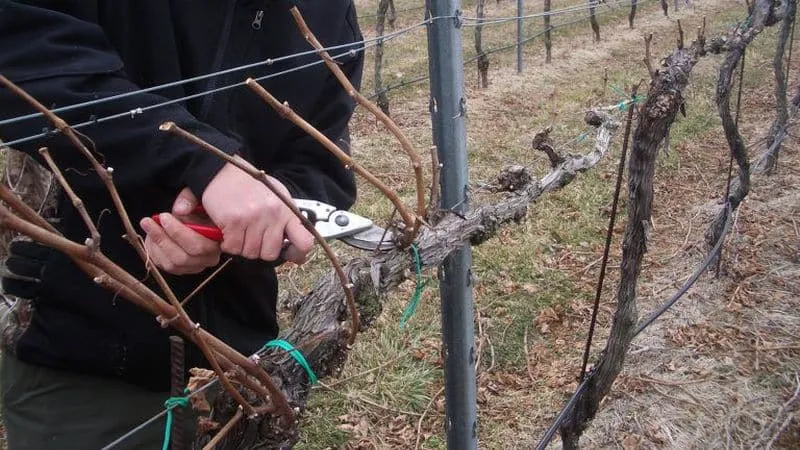
Prune annually in spring or autumn. The stems mature early with long internodes. Growers recommend spur pruning (6–8 buds). In spring, remove up to 80% of old growth from healthy vines using sharp tools.
The "goblet" training system, common in Iberia, maximizes sun exposure, enhancing berry flavor with fruity intensity.
Disease and Pest Management
Tempranillo is prone to fungal diseases like gray mold, downy mildew, and powdery mildew. Preventive spraying minimizes risks. Use contact fungicides: Switch, Stroby, Kumulus DF, or Bordeaux mixture, colloidal sulfur.
For infections, apply sulfur solution (100 g/10 L water). Treat vines evenings or on cloudy days, repeating every 10 days (minimum three applications).
Important! Sulfur works above +20°C. Below this, use Switch, Stroby, or Kumulus DF.
The most destructive pest is phylloxera (vine louse), which attacks roots. Infestations spread rapidly, killing vines. Telltale signs: root galls.
Control requires pyrethroids (Cypermethrin, Deltamethrin), organophosphates (Metaphos, Thiophos), or neonicotinoids (Actara), as home remedies are ineffective. Eco-friendly options include Bitoxibacillin and Spinosad.
Harvest and Storage
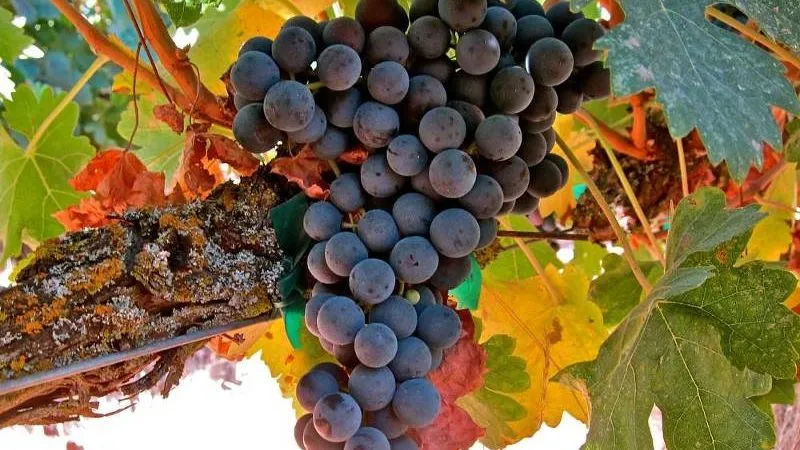
Harvest clusters in dry weather using sharp tools, then process immediately. Technical grapes aren’t stored long — they’re destined for winemaking.
Conclusion
Tempranillo is an ancient dark-skinned grape from the Iberian Peninsula, prized for early ripening. Its small, near-black berries yield balanced, tannic wines. The variety excels in Port and fruit-forward reds, with oak aging adding complexity.
Cultivation is labor-intensive: irrigation, fertilization, pruning ("goblet" training), and fungicide applications are essential. Phylloxera requires aggressive insecticide or biological control. When mastered, Tempranillo rewards with world-class wines.







